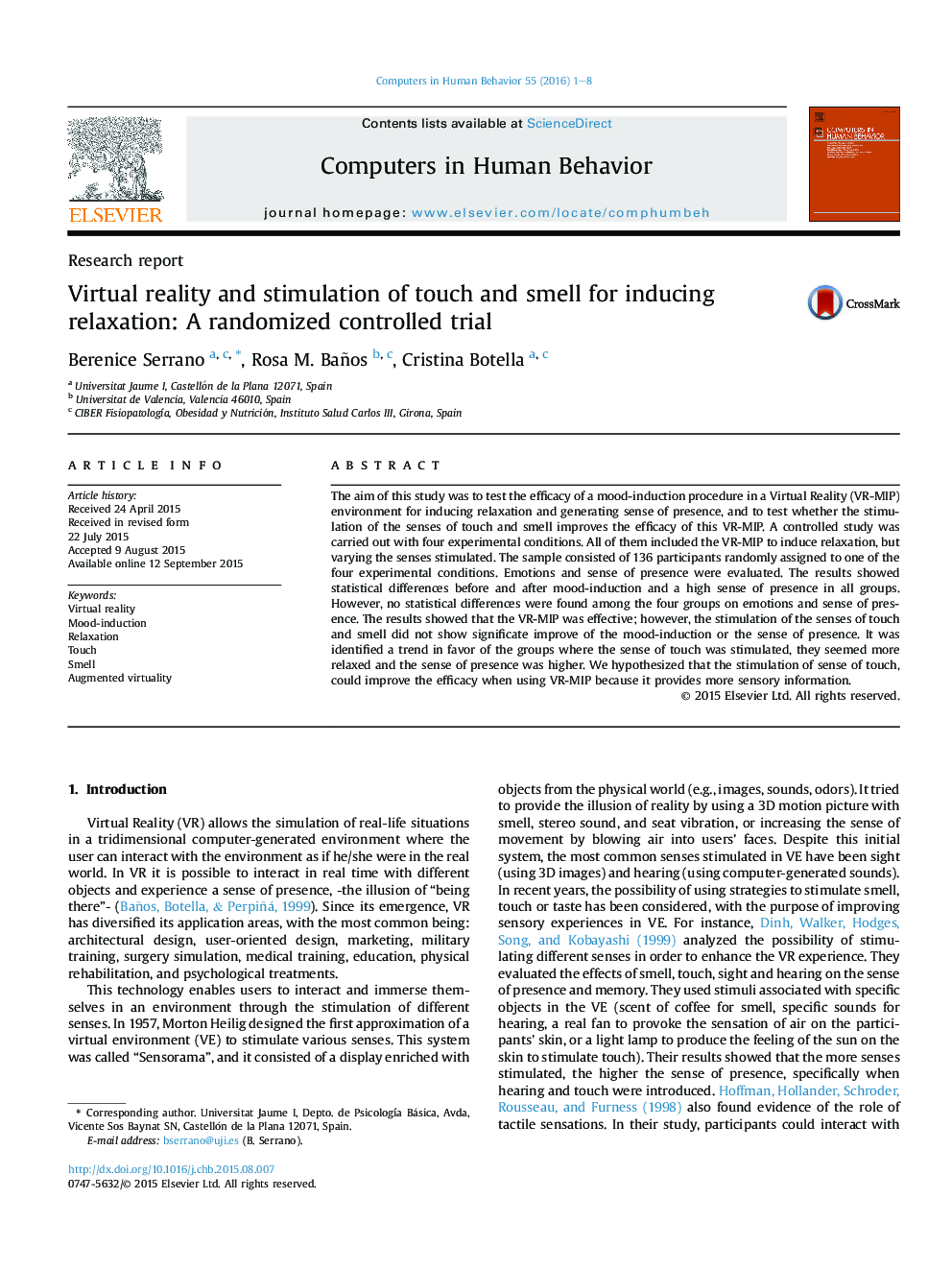| Article ID | Journal | Published Year | Pages | File Type |
|---|---|---|---|---|
| 350146 | Computers in Human Behavior | 2016 | 8 Pages |
•A Virtual reality environment and mood-induction for inducing relaxation were tested.•The senses of touch and smell were stimulated to improve the mood-induction and sense of presence.•The stimulation of sense of touch, could improve the efficacy when using VR-MIP.
The aim of this study was to test the efficacy of a mood-induction procedure in a Virtual Reality (VR-MIP) environment for inducing relaxation and generating sense of presence, and to test whether the stimulation of the senses of touch and smell improves the efficacy of this VR-MIP. A controlled study was carried out with four experimental conditions. All of them included the VR-MIP to induce relaxation, but varying the senses stimulated. The sample consisted of 136 participants randomly assigned to one of the four experimental conditions. Emotions and sense of presence were evaluated. The results showed statistical differences before and after mood-induction and a high sense of presence in all groups. However, no statistical differences were found among the four groups on emotions and sense of presence. The results showed that the VR-MIP was effective; however, the stimulation of the senses of touch and smell did not show significate improve of the mood-induction or the sense of presence. It was identified a trend in favor of the groups where the sense of touch was stimulated, they seemed more relaxed and the sense of presence was higher. We hypothesized that the stimulation of sense of touch, could improve the efficacy when using VR-MIP because it provides more sensory information.
